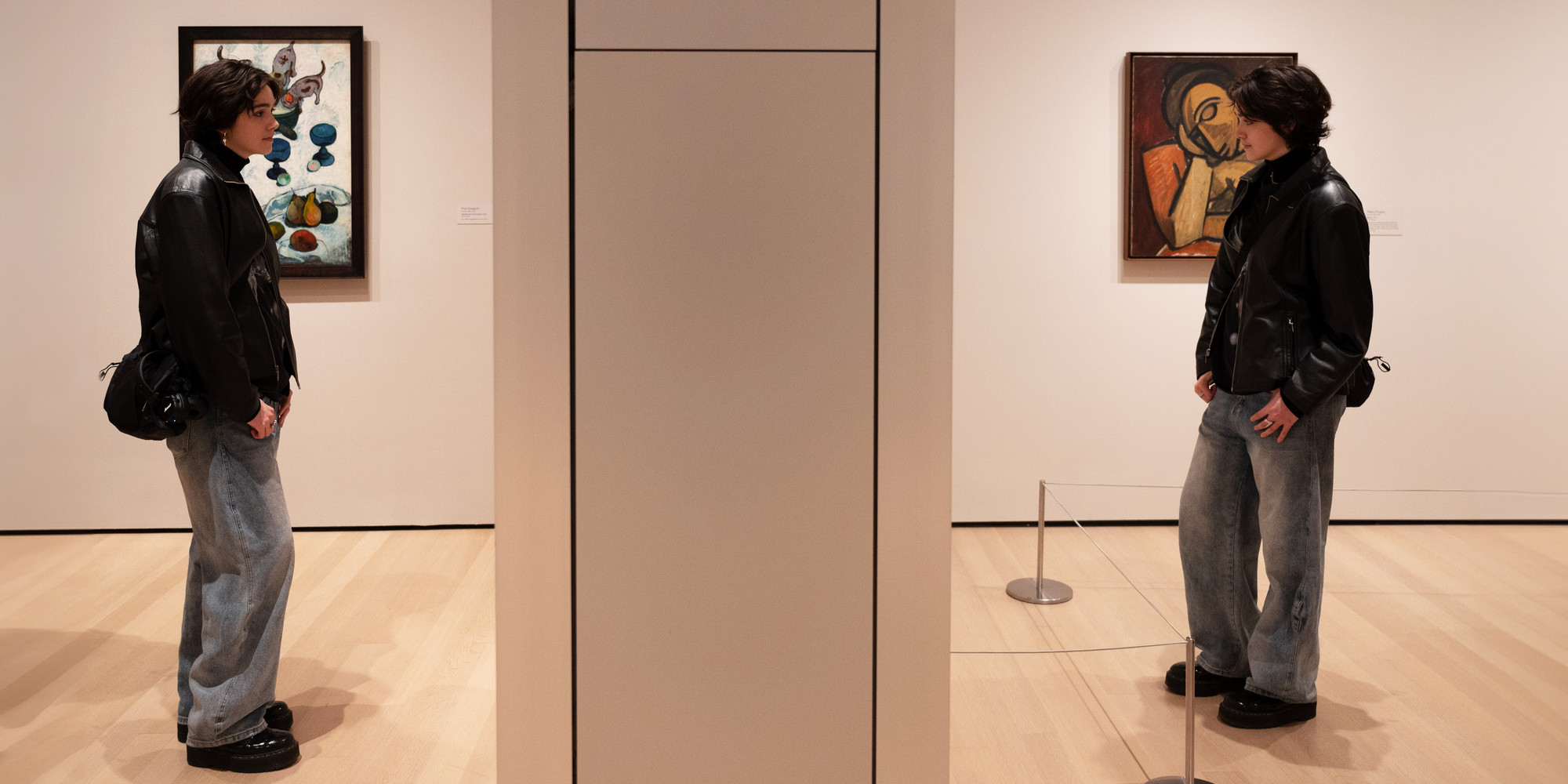
MoMA Mixtape: Edward Hopper Feels Like Home
Iris Olympia searches for a familiar connection between art, music, and the soul.
Iris Olympia
Feb 22, 2024
When Naeem, MoMA’s content producer, asked me to do a MoMA Mixtape, it felt like the stars were aligning. I had been to the Museum once before, for the Glass Eye Pix retrospective featuring my partner’s film Foxhole. Yet my connection with Naeem was much more random—it was on a small street in Brooklyn when he saw me and asked to take my photograph. Two disconnected events bound me to MoMA.
My method for this visit was to find what resonates—if I could do that, the music and the structure of this collection would appear. And so it did.
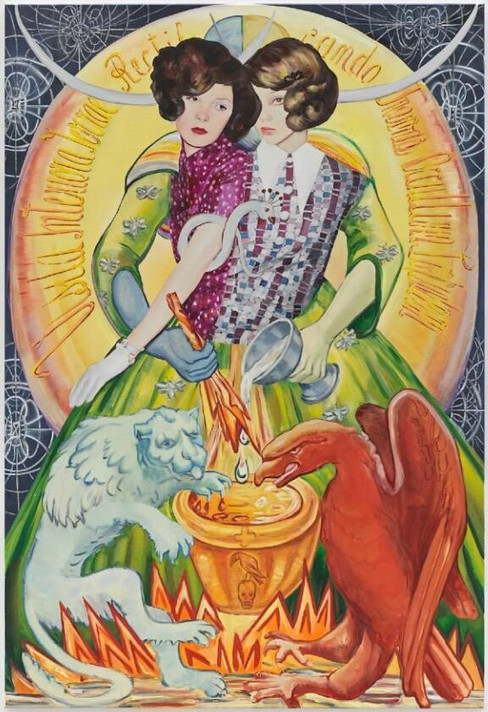
Paulina Olowska. Hybrid (Visita interiora terrae rectificando invenies occultum lapidem). 2021
Paulina Olowska’s Hybrid (Visita interiora terrae rectificando invenies occultum lapidem) + monty.pk’s “Staring at the Sun”
I passed Hybrid soon after arriving at MoMA, and it became lodged in my mind. Paulina Olowska captures a fused duality that I see as an image of power and desperation. The subject takes matters into her own hands with fierce independence. “Staring at the Sun” was released the night before my visit. monty.pk showboats self-loathing and a reactive attitude in the grating texture of the verses—“I’m not a fan of me either…go ahead push the blade down deeper.” It could be easy to miss the raw vulnerability hanging onto monty.pk’s laissez-faire lyricism. As I walked around to other galleries, I knew I had to come back to Hybrid. I sought this painting out, and stood in front of it, headphones on, listening repeatedly. Strangely, they fit together.
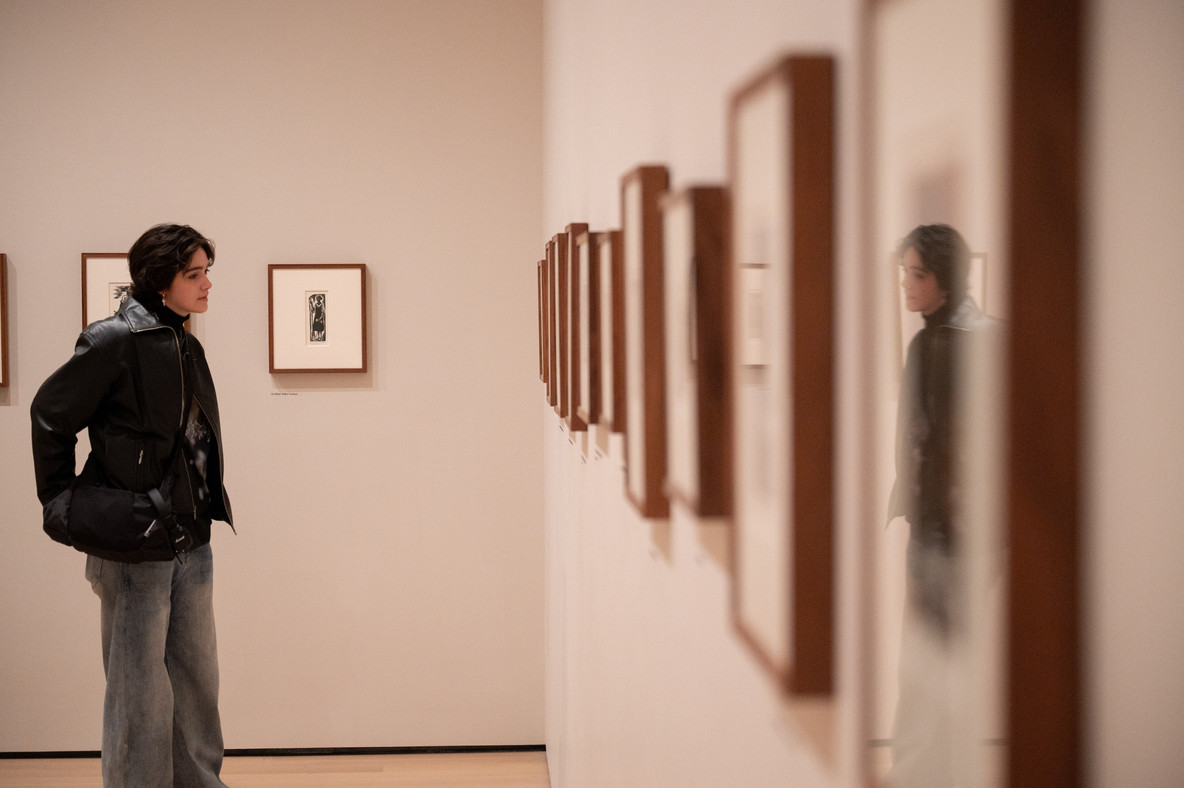
Iris Olympia at MoMA
Joan Miró’s Barcelona XIII + Temptation’s “Michelle Gurevich”
I love finding silly little figures in museums. These appear to be having a communion—wiggling and starry-eyed. I see and drink up the casual indulgence. I discovered Michelle Gurevich after watching a docuseries about a cult on Netflix. This lyrical post-religion anthem seems only fitting. Why resist temptation?
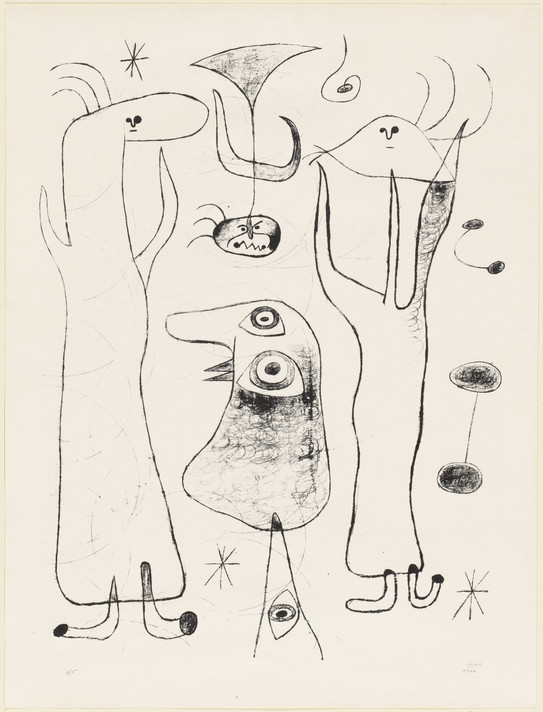
Joan Miró. Barcelona, XIII. 1944
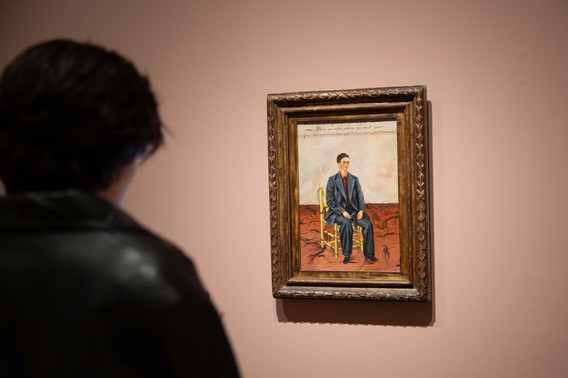
Frida Kahlo. Self-Portrait with Cropped Hair. 1940
Frida Kahlo’s Self-Portrait with Cropped Hair + Clairo’s “Alewife”
This was the first time I’ve been exposed to this painting by Frida Kahlo. As a nonbinary person, I find gender-expansive representations heartbreaking. I ask, “Where was this all my life?” but also avoid engaging when a work resonates with me on this level. Suicidal ideation often plagues artists, obsessives, those of us who need to express—lest those feelings eat us alive. “Alewife” is a ballad of gratitude—“swear I could’ve done it, if you weren’t there when I hit the floor.” Representations of nonconformity can operate as this saving grace. Thank you Frida.
René Magritte’s The Portrait + Michael Giacchino’s “Ratatouille Main Theme”
I adore The Portrait. There is something to be said about a simple meal. Though unlikely to pass muster for France’s smallest chef, I couldn’t help but pair these together as I would a summer afternoon and a bottle of La Vieille Ferme. This work resonates in many different parts of the body—the disordered food relationship, the surveillance of consumption (I am a content creator after all), and, despite it all, the simple joy of eating. Bon appétit!
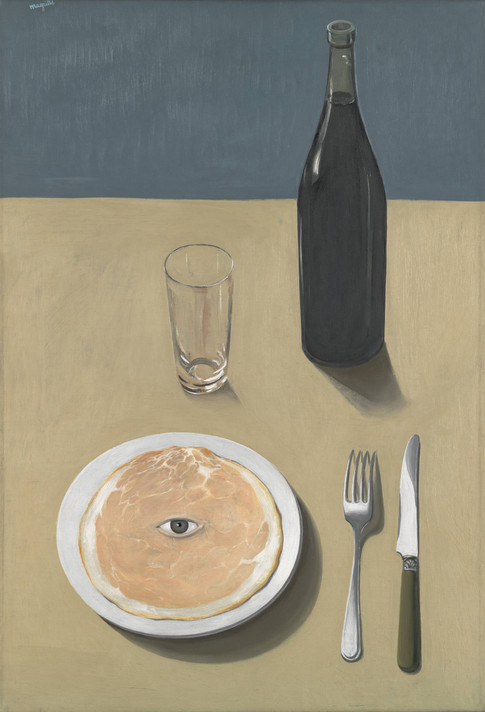
René Magritte. The Portrait. 1935

Iris Olympia at MoMA
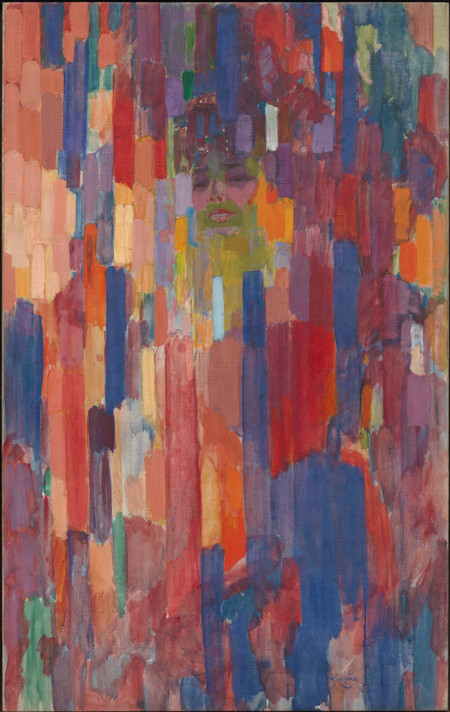
František Kupka. Mme Kupka among Verticals. 1910–11
František Kupka’s Mme Kupka among Verticals + Lewis Del Mar’s “Loud(y)”
This song comes to me out of the rubble of time. I listened to a lot of Lewis Del Mar when I was in high school, and “Loud(y)” called out to me, wishing to be included in this collection of music. I find the song more relevant now than ever—“you love to feel offended, fire from computer trenches…everyone’s yelling, it’s cracking the ceiling, paint peeling.” When I look at this painting, I see a woman overrun. It’s a loud world.
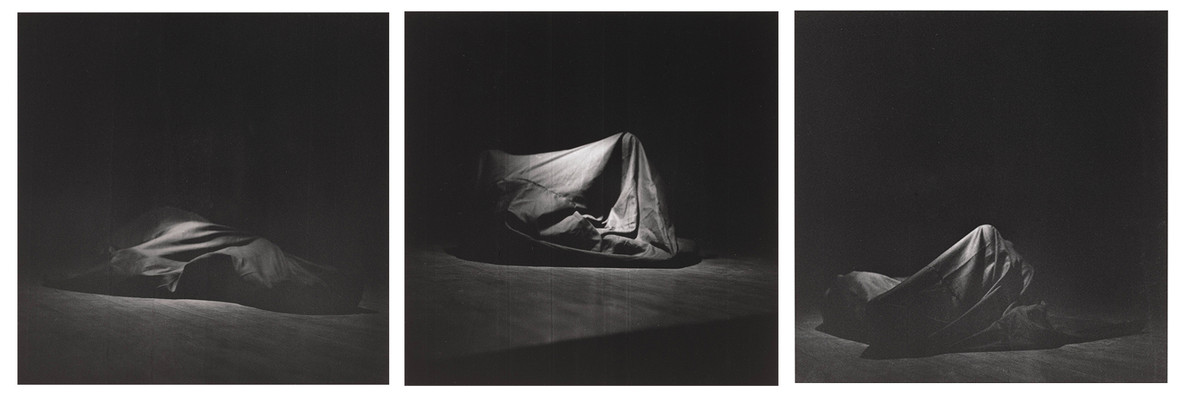
Yoko Ono. Bag Piece. 1965
Yoko Ono’s Bag Piece + Dinoboy’s “Only Love Her” (feat. Computerwife)
I have a lot of experience hiding—under the covers, under my mother’s skirt as a child, away from prying eyes. Sometimes, it’s a happy place; at other times, it’s a brief respite from overwhelming sensitivity. The German word “angst” comes to mind. I don’t know the true meaning behind “Only Love Her,” but to me it is a song about hiding. Self-eviscerating and lonely, these two works join together in suffocation.
Edward Hopper’s Gas + Manchester Orchestra and Phoebe Bridgers’s “The Gold”
Growing up in the Pacific Northwest, I was forged in nostalgic lights at gas stations and among the evergreens of the island I called home. Vashon is a beautiful place. I had a secret boyfriend when I was 17—a guy my friends hated. I would see him on misty nights and ignore him in the gray of day. I wanted to be seen by someone who didn’t have any idea who I was. I wanted to be someone new and unseen by the eyes that had always been watching me. It’s hard to change in a small town. Phoebe Bridgers has always captured the heartbreak of waning youth beautifully.
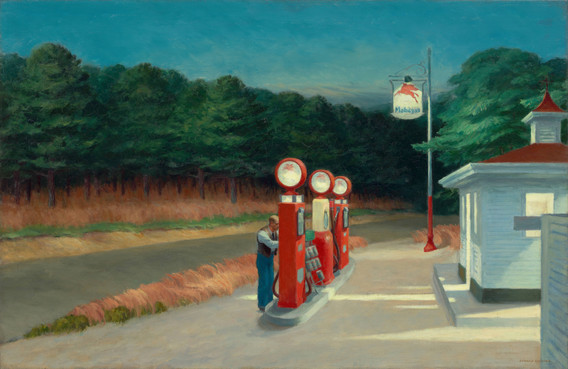
Edward Hopper. Gas. 1940
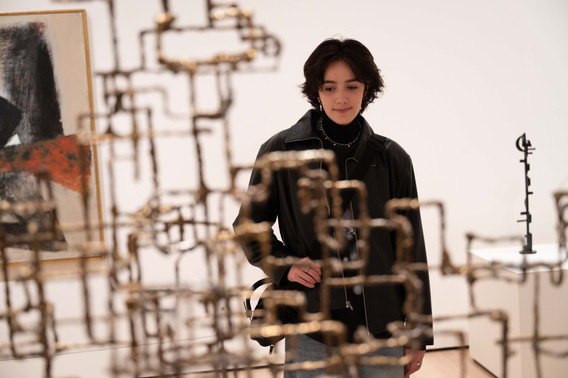
Iris Olympia at MoMA
I have a lot of experience hiding—under the covers, under my mother’s skirt as a child, away from prying eyes. Sometimes, it’s a happy place; at other times, a brief respite from overwhelming sensitivity.
Yves Klein’s Blue Monochrome + Frank Ocean’s “Facebook Story”
While the title “Facebook Story” seems a fitting complement to this monochromatic work, my pairing is less about the color and more about the narrative. What story do you see? Does it change when someone else is looking? Does it mean anything at all?
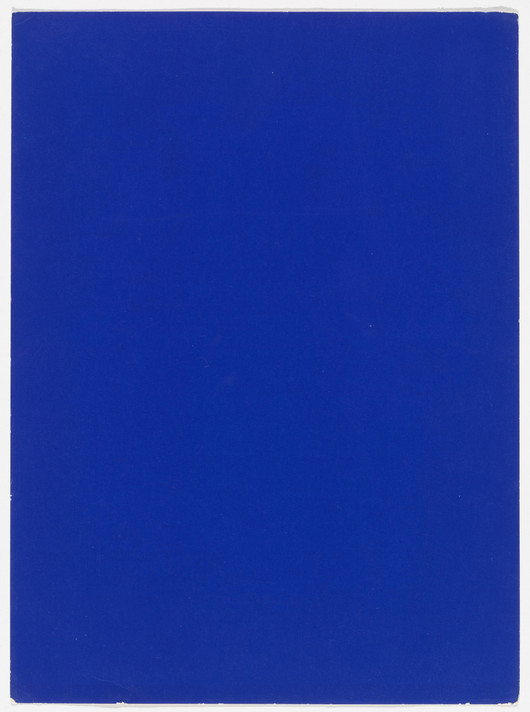
Yves Klein. Blue Monochrome. 1961
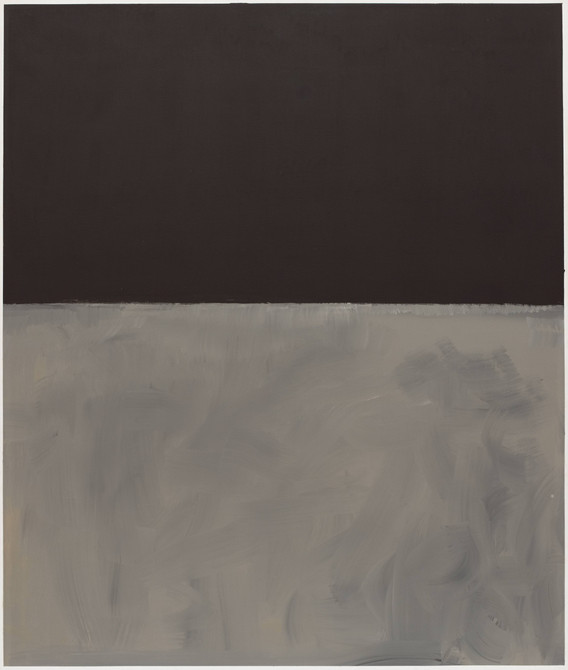
Mark Rothko. Untitled. 1969–70
Mark Rothko’s Untitled + MEMI’s “Sorry for My Late Reply”
Mark Rothko created this painting a year before his death by suicide. I offer this song as a tribute to the signs that were there before the end. “Sorry for My Late Reply” is a regret anthem. Written by MEMI in response to the suicide of her late father, this bilingual hit faces complicated loss in the way only distorted guitar can.
Pierre Soulages’s Painting + WILLOW’s “T r a n s p a r e n t s o u l” (ft. Travis Barker)
“T r a n s p a r e n t s o u l” is a full-body expression of angst. Thrashing guitar, thrashing drums, thrashing brushstrokes. Frustration, anger, and resultant action. That’s what I see in Pierre Soulages’s Painting. Wie kann man gewalttätige Gefühle äußern?*
*How can one express violent/powerful feelings?
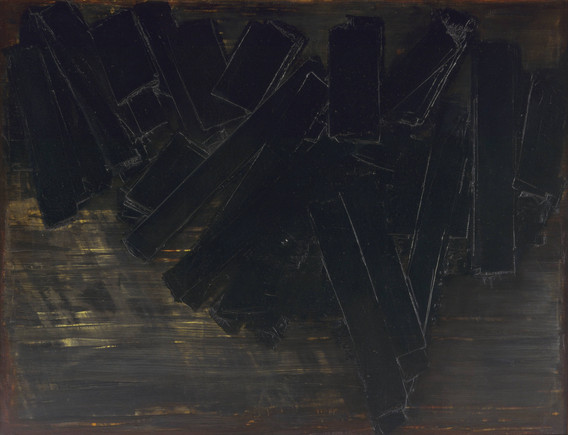
Pierre Soulages. Painting. August 1, 1956
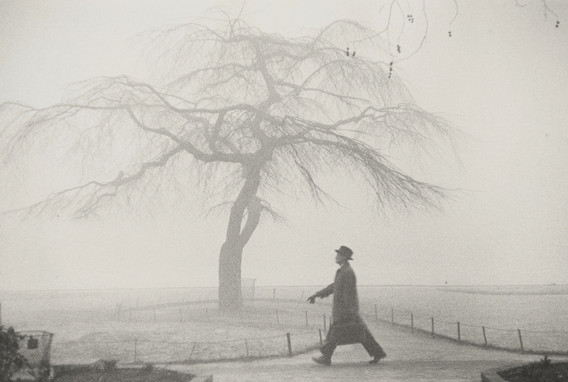
Robert Frank. Tree, London. 1951
Robert Frank’s Tree, London 1951 + Bon Iver’s “Holocene”
Bon Iver crafts beautiful songs structured in lyrical gibberish. Yet he always captures a longing, nostalgia, and depth that is hard to find anywhere else. “Holocene” is a misty song for a misty photograph. I have always been intensely sentimental—my family moved when I was four years old, and when I learned I would be leaving the home that I loved, I visited each doorknob in the house to say goodbye. This intensity of feeling was built in from the beginning, and when I walk in the rain, when I attend to the sounds of wistfulness, I am liberated.
Jenny Holzer and Lady Pink’s Trust visions that don’t feature buckets of blood + Rihanna’s “Umbrella” (feat. Jay-Z)
Trust requires confidence in our collective future. I don’t believe in dismal visions, because I don’t believe people are bad. But we learn to fear our neighbors—while doomscrolling, policing, controlling—for fear that something might happen. Every day these fears become more and more warranted. Kids are shot, people’s needs are criminalized, and voices are raised and ignored. It’s much harder to trust visions that don’t feature buckets of blood when we are collectively exhausted and alone in homes that we nurture into our sole safe spaces. I don’t know what our future looks like, but what I do know is that a better future begins with trust. I will hold you in good faith because I know who the enemy is, and it’s not a stranger on the Internet. “Now that it’s raining more than ever / know that we’ll still have each other / you can stand under my umbrella.” We need a little help from each other.
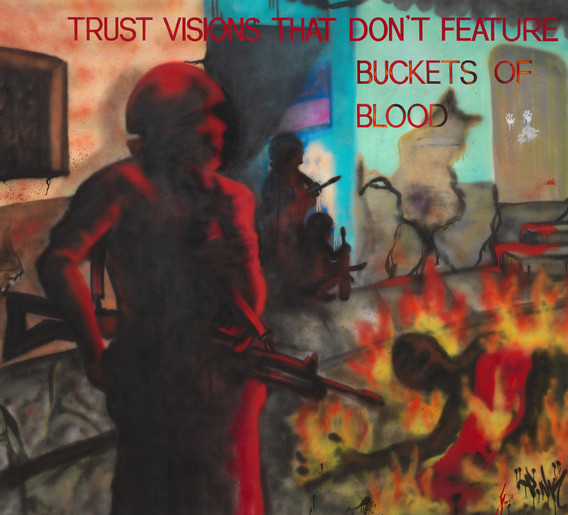
Jenny Holzer, Lady Pink. Trust visions that don't feature buckets of blood. 1983–84
Raised in the Pacific Northwest, 23-year-old Iris Olympia Sackman grew up on the Internet. After a decade posting on YouTube, Iris gained over 150,000 followers on Instagram in 2023, with many viewers tuning in for their perspective on fashion for the gender nonconforming. With hope to feature more of their original music, Iris provides advice for young genderqueer people across the globe. Iris uses she/he/they pronouns.
Related articles
-
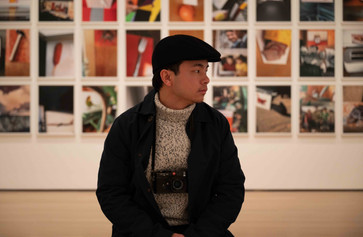
Playlist
MoMA Mixtape: What Would Jay Z Meeting Ellsworth Kelly Sound Like?
Photographer Chris Chu creates an ode to hip-hop.
Chris Chu
Jan 31, 2024
-

Playlist
MoMA Mixtape: Grace Wales Bonner on the Sacred Space between the Shape of Music and the Sounds of Art
The designer takes us on a sonic journey through her Artist’s Choice exhibition, Spirit Movers.
Grace Wales Bonner
Nov 16, 2023

